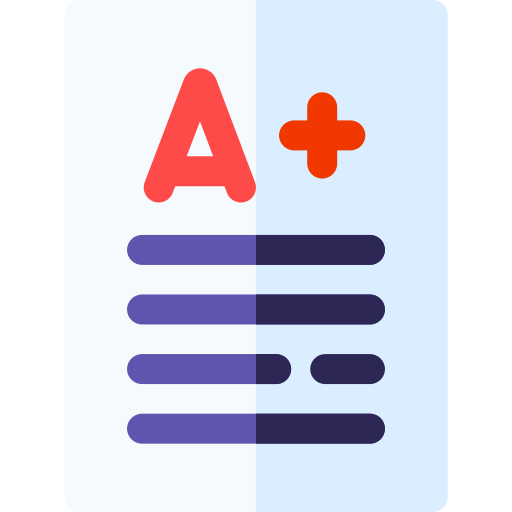دليل المعلم الرياضيات Reveal للصف السادس منهج انجليزي الفصل الثالث 2021-2022
Standards for Mathematical Practice
Make sense of problems and persevere solving them
Mathematically proficient students start by explaining to themselves the meaning of a problem and looking for entry points to its sdutiom They analyze givens, constraints, relationships, and pals. They make conjectures about the form and meaning of the solution and plan a solLRion pathway rather than sinwy junping into a solution attempt They consider problems, and try special cases and simpler forms of the original problem in order to gain 1Sight into its solut They mmitor and evaluate their progress and change cmrse if necessary. Oder students mi#lt, depending the context of the problem. transform algebraic expressims or the viewing window on their graphing calculator to get the ülformation they need. Mathematically proficient students can explain between equations. verbal descriptions, tables. and graphs or draw dagrams of important features and relationships, graph data, and search for regularity or Younger students might rely using concrete objects pictures to help coxeptualize and solve a problem. Mathematically proficient students check their answers to prouems using a different and they contjrually ask themselves, "Does this make sense ?" They can understand the approaches of others to solving complex problems and identity correspondences different a roaches
Reason abstractly arui quantitatively
Mathematically proficient students make sense of quantities and freir relationships in problem situations. They bring two complementary abilities to bear on problems involving quantitative relationships the ability to decontextualize—to abstract a given situation and represent it symbolically and manipulate the representing symbols as if they have a life of their own, without necessarily attending to their referents —and the ability to contextualize, to pause as needed during the manipulation process in order to probe into the referents for the synms involved. Oua ntitative reasoning entails habits of creating a coherent representation of the problem at hand; the units involved; attending to the meaning of quantities, not just how to compute them; and kmwing and flexbly using different properties of operations and objects
ConstrLRt viable arguments and critique the reasoning of other
Mathematically proficient students understand and use stated assumptions, definitions, and previously established results in constructing arguments. They make conjectures and build a cal of statements to explore the truth of their conjectures
They are able to analyze situations by breaking them into cases, and can recognize and use counterexamples. They justify their conclusims, communicate them to others, and respond to the arguments of others. They reason inductively about data , making plausible arguments that take into account the context from which. the data arose.. Mathematically proficient students are also able to compare the effectiveness of two plausible arguments, correct or reasming from that which is flawed, and—if there is a flaw in an argument—explain what it is. Elementary students can construct arguments using cmcrete referents such as objects
drawings, and actions. Such arguments can make sense. and t2 correct, even they are not generalized or made. until later grades. Later, students learn to determine domains to which an argument applies. Studenß at all grades can listen or read the arguments of others. decide whether they make sense, and ask useful questions to clarity or improve the arguments
Model with mathematics
Mathematically proficient students can apply the mathematics they know to solve arising in everyday life. society. and the
workplace. In early grades. this might tk as simple as writing an additim equatim to descrbe a situation. In middle grades, a student might reasoning to plan a school event or analyze a problem in the community. By high school, a student might use geometry to solve a problem use a function to descrbe how one quantity of interest on another. Mathematically proficient students who can apply what they know are making assumptions and approximations to simplify a complicated situation, realizing that these may need revision later. They are aNe. to identify inptant quantities in a practical situation and map their relationships using such tools as diagrams. two-way tables, graphs,. flowcharts and formulas. They can analyze those relationshs mathematically to craw conclusions. They routinely interpret their
mathematical results in the context of the situation and reflect on whether the results make sense, inwoving the if it has not served its purpose
I- Jse appropriate tools strategkany Mathematically proficient students consider the ava ilable tools when solving a mathematical problem. These might include pencil and paper, concrete models, a ruler, a a calculator, a spreadsheet, a cornputer system, a statisücal package, or dynamic geometry software. Proficient students are sufficiently familiar with tools appropriate for grade or cwrse to make sound decisions when each of these tools be helpful, both the insilt to be gained and their limitations. For example, mathematica Ily proficient high scrm students analyze of functions and sdutions generated using a graphing calculator. They detect errors by strategica Ily using estimation and other mathematical knoWedge. When making mathematical models. they know that technology can enable them to visualize the results of varying assumptions, explore consequences, and compare predictions with data. Mathematically proficient students at various levels are able to identify relevant external mathematical resources, such as digtal content on a website, and use them to pose or solve They are able to use tods to explore and deepen their understandng of concepts
Attend to precisim
Mathematically proficient students try to communicate precisely to others. They try to use clear definitims in discussion with and in their own They state the meaning of fre symbols they chwse, including using the equal sign cmsistentty and They are careful specifying units of measure, axes to clarify the correspondence with quantities in a prouem. They calculate accurately efficiently, express numerical answers W'ith a degree of precision appropriate for the prob em conten In he elementary grades, students gve carefully formuated explanaüons to each other. By the time they reach high they have learned to examine claims and make explicit use of defnitions
Essential Question
At the end of this module, students will complete a yaphic organizer to help thern answer the Essential Question
How can you describe how two quantities are See students graphic organizers
What Will You Learn
Prior to this module, have your students rate their knowledge of each item listed. At the end of the module. you will be reminded to have your students return to these pages to rate their knowledge again
They should see that their knowledge and skills have increased
Foldables are three -dimensimal graphic organizers that help students create study guides for each Step I Have students the module Foldable at the back of the Interactive Student Edition. They should follow the cutting and assembly instructions at the top of the page
Step 2 Have students attach their Foldable to the first page of the Review, by matching up the tabs. Dotted tabs incficate where to the Foldable. tabs indicate where to tape the Foldable
When to Use It Students add information to their Foldables as they complete selected lessons. Once they've completed their Foldable, they can use it to help them for the nmJle assessment
Launch the Module
The Launch the Module video uses the topics of peanut butter baseball batting and the eating habits of blue whales to introduce the of ratios and rates. Use the to engage tkfore starting the
Pause and Reflect
your students to engage in the habit of refkctm As they progress through the they will encouraged to pause and think about what they just learned. These moments of reflection are indcated by the Pause and Reflect questions that in the Interactive Student Edition. You may wish to have your students share their responses with a partner use these questjms to facilitate a whole-class discussion




